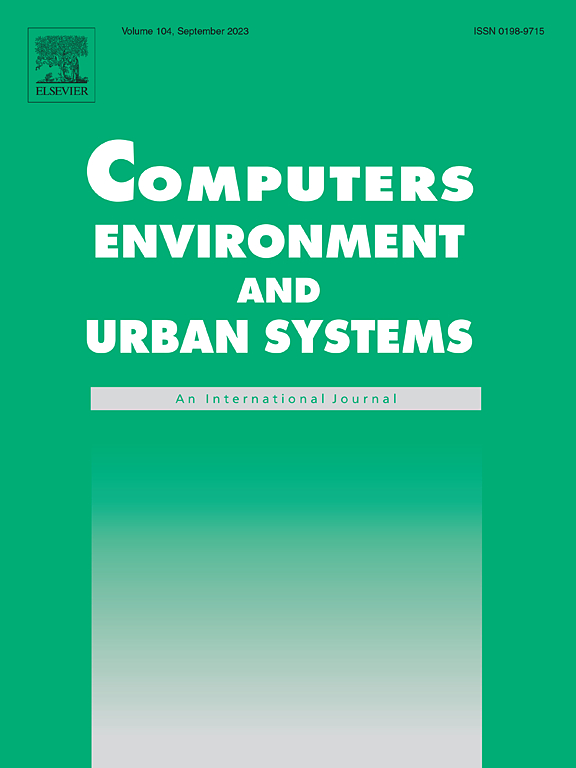Reproducible methods for modeling combined public transport and cycling trips and associated benefits: Evidence from the biclaR tool
IF 8.3
1区 地球科学
Q1 ENVIRONMENTAL STUDIES
Computers Environment and Urban Systems
Pub Date : 2024-12-09
DOI:10.1016/j.compenvurbsys.2024.102230
引用次数: 0
Abstract
A high proportion of car trips can be replaced by a combination of public transit and cycling for the first-and-last mile. This paper estimates the potential for cycling combined with public transit as a substitute for car trips in the Lisbon metropolitan area and assesses its socio-environmental impacts using open data and open source tools. A decision support tool that facilitates the design and development of a metropolitan cycling network was developed (biclaR). The social and environmental impacts were assessed using Health World Organization tools. The impacts of shifting car trips to public transport were also estimated and monetized. The results show that 10 % of all trips could be made by cycling in combination with public transport. Shifting to cycling for the shorter first and last mile stages can reduce annual CO2eq emissions from 3000 to 7500 tons/year, while for the public transport leg, the transfer from car avoids of up to 20,500 tons of CO2eq emissions per year. The estimated socio-environmental benefits are of €125 million to €325 million over 10 years. This evidence can support policymakers to prioritize interventions that reduce the reliance on private motor vehicles.
综合公共交通和自行车旅行及其相关效益建模的可重复方法:来自biclaR工具的证据
在第一英里和最后一英里,很大一部分的汽车出行可以被公共交通和骑自行车的组合所取代。本文估计了在里斯本大都会区骑自行车与公共交通相结合作为汽车旅行替代品的潜力,并使用开放数据和开源工具评估了其社会环境影响。开发了促进都市自行车网络设计和开发的决策支持工具(biclaR)。使用世界卫生组织的工具评估了社会和环境影响。将汽车出行改为公共交通的影响也被估计和货币化。结果表明,10%的出行可以通过骑自行车和公共交通相结合来完成。在较短的第一英里和最后一英里阶段转向骑自行车可以将每年的二氧化碳排放量从3000吨减少到7500吨/年,而对于公共交通来说,从汽车转移到自行车每年可避免高达20,500吨的二氧化碳排放量。预计未来10年的社会环境效益为1.25亿至3.25亿欧元。这一证据可以支持政策制定者优先考虑减少对私人机动车辆依赖的干预措施。
本文章由计算机程序翻译,如有差异,请以英文原文为准。
求助全文
约1分钟内获得全文
求助全文
来源期刊

Computers Environment and Urban Systems
Multiple-
CiteScore
13.30
自引率
7.40%
发文量
111
审稿时长
32 days
期刊介绍:
Computers, Environment and Urban Systemsis an interdisciplinary journal publishing cutting-edge and innovative computer-based research on environmental and urban systems, that privileges the geospatial perspective. The journal welcomes original high quality scholarship of a theoretical, applied or technological nature, and provides a stimulating presentation of perspectives, research developments, overviews of important new technologies and uses of major computational, information-based, and visualization innovations. Applied and theoretical contributions demonstrate the scope of computer-based analysis fostering a better understanding of environmental and urban systems, their spatial scope and their dynamics.
 求助内容:
求助内容: 应助结果提醒方式:
应助结果提醒方式:


